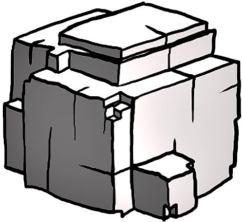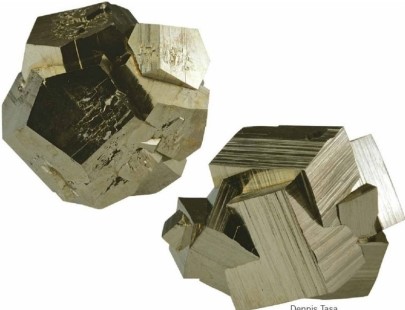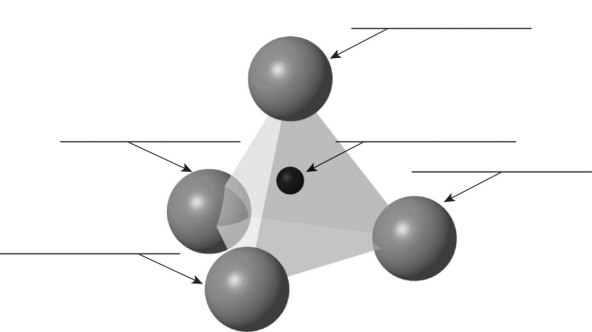Deck 1: Matter and Minerals
Question
Question
Question
Question
Question
Question
Question
Question
Question
Question
Question
Question
Question
Question
Question
Question
Question
Question
Question
Question
Question
Question
Question
Question
Question
Question
Question
Question
Question
Question
Question
Question
Question
Question
Question
Question
Question
Question
Question
Question
Question
Question
Question
Question
Question
Question
Question
Question
Question
Question
Question
Question
Question
Question
Question
Question
Question
Question
Question
Match between columns

Unlock Deck
Sign up to unlock the cards in this deck!
Unlock Deck
Unlock Deck
1/59
Play
Full screen (f)
Deck 1: Matter and Minerals
1
Three of the following ARE true for minerals. Which one of the following is NOT true for minerals?
A)They have a specific, predictable chemical composition.
B)They have an orderly internal crystalline structure.
C)They can be identified by characteristic physical properties.
D)They can be a liquid, solid, or gas.
A)They have a specific, predictable chemical composition.
B)They have an orderly internal crystalline structure.
C)They can be identified by characteristic physical properties.
D)They can be a liquid, solid, or gas.
D
2

How many cleavage directions does this mineral specimen display?
A)1
B)2
C)3
D)4
C
3
What element is the most abundant in the Earth's crust by weight?
A)carbon
B)chlorine
C)oxygen
D)lead
A)carbon
B)chlorine
C)oxygen
D)lead
C
4
Which of the following best defines the relationship between minerals and rocks?
A)A rock has an orderly, repetitive, geometrical, internal arrangement of minerals; a mineral is a lithified or consolidated aggregate of rocks.
B)A mineral consists of atoms arranged in a geometrically repetitive structure; in a rock, the atoms are randomly bonded without any geometric pattern.
C)In a mineral, atoms are bonded in a regular, repetitive, internal structure; a rock is a lithified or consolidated aggregate of mineral grains.
D)A rock consists of atoms bonded in a regular, geometrically predictable arrangement; a mineral is a consolidated aggregate of rock particles.
A)A rock has an orderly, repetitive, geometrical, internal arrangement of minerals; a mineral is a lithified or consolidated aggregate of rocks.
B)A mineral consists of atoms arranged in a geometrically repetitive structure; in a rock, the atoms are randomly bonded without any geometric pattern.
C)In a mineral, atoms are bonded in a regular, repetitive, internal structure; a rock is a lithified or consolidated aggregate of mineral grains.
D)A rock consists of atoms bonded in a regular, geometrically predictable arrangement; a mineral is a consolidated aggregate of rock particles.

Unlock Deck
Unlock for access to all 59 flashcards in this deck.
Unlock Deck
k this deck
5
The resistance of a mineral to scratching or abrasion is known as ________.
A)luster
B)cleavage
C)streak
D)hardness
A)luster
B)cleavage
C)streak
D)hardness

Unlock Deck
Unlock for access to all 59 flashcards in this deck.
Unlock Deck
k this deck
6
All of the atoms making up any given element have the same number of ________.
A)electrons in the nucleus
B)protons in the nucleus
C)neutrons in the outer nuclear shell
D)electrons in the outermost valence shell
A)electrons in the nucleus
B)protons in the nucleus
C)neutrons in the outer nuclear shell
D)electrons in the outermost valence shell

Unlock Deck
Unlock for access to all 59 flashcards in this deck.
Unlock Deck
k this deck
7
Which of the following minerals is a silicate (a mineral containing a silicon-bearing ion)?
A)hematite
B)feldspar
C)calcite
D)halite
A)hematite
B)feldspar
C)calcite
D)halite

Unlock Deck
Unlock for access to all 59 flashcards in this deck.
Unlock Deck
k this deck
8
Which common mineral is composed entirely of silicon and oxygen?
A)calcite
B)diamond
C)olivine
D)quartz
A)calcite
B)diamond
C)olivine
D)quartz

Unlock Deck
Unlock for access to all 59 flashcards in this deck.
Unlock Deck
k this deck
9
The appearance or quality of light reflected from the surface of a mineral is known as ________.
A)cleavage
B)luster
C)specific gravity
D)streak
A)cleavage
B)luster
C)specific gravity
D)streak

Unlock Deck
Unlock for access to all 59 flashcards in this deck.
Unlock Deck
k this deck
10
You are handed a sample of an unknown silicate mineral. Which two elements MUST it contain?
A)silicon and oxygen
B)iron and silicon
C)carbon and hydrogen
D)silicon and sodium
A)silicon and oxygen
B)iron and silicon
C)carbon and hydrogen
D)silicon and sodium

Unlock Deck
Unlock for access to all 59 flashcards in this deck.
Unlock Deck
k this deck
11
The ion at the center of a silicon-oxygen tetrahedron is surrounded by ________.
A)4 oxygen ions
B)6 oxygen ions
C)4 sodium ions
D)6 sodium ions
A)4 oxygen ions
B)6 oxygen ions
C)4 sodium ions
D)6 sodium ions

Unlock Deck
Unlock for access to all 59 flashcards in this deck.
Unlock Deck
k this deck
12
An atom's mass number is 13 and its atomic number is 6. How many neutrons are in its nucleus?
A)19
B)13
C)7
D)6
A)19
B)13
C)7
D)6

Unlock Deck
Unlock for access to all 59 flashcards in this deck.
Unlock Deck
k this deck
13
Which one of the following mineral groups exhibits a sheet-like silicate structure?
A)carbonates
B)pyroxenes
C)micas
D)feldspars
A)carbonates
B)pyroxenes
C)micas
D)feldspars

Unlock Deck
Unlock for access to all 59 flashcards in this deck.
Unlock Deck
k this deck
14
Due to the arrangement of weaker bonds in their crystal lattice, the tendency of certain minerals to break along smooth, parallel planes is known as ________.
A)streak
B)cleavage
C)luster
D)crystal habit
A)streak
B)cleavage
C)luster
D)crystal habit

Unlock Deck
Unlock for access to all 59 flashcards in this deck.
Unlock Deck
k this deck
15
Which the following are the positively charged particles in an atom's nucleus?
A)protons
B)neutrons
C)ions
D)electrons
A)protons
B)neutrons
C)ions
D)electrons

Unlock Deck
Unlock for access to all 59 flashcards in this deck.
Unlock Deck
k this deck
16
In a cooling magma composed of silicon, oxygen, aluminum, potassium, hydrogen, calcium, and sodium atoms, which of the following silicate minerals would be impossible to crystallize?
A)quartz
B)olivine
C)muscovite
D)potassium feldspar (orthoclase)
A)quartz
B)olivine
C)muscovite
D)potassium feldspar (orthoclase)

Unlock Deck
Unlock for access to all 59 flashcards in this deck.
Unlock Deck
k this deck
17
When in contact with hydrochloric acid, which mineral gives off bubbles of carbon dioxide gas?
A)quartz
B)halite
C)calcite
D)fluorite
A)quartz
B)halite
C)calcite
D)fluorite

Unlock Deck
Unlock for access to all 59 flashcards in this deck.
Unlock Deck
k this deck
18
Atoms that have an electrical charge due to a gain or loss of electrons are called ________.
A)ions
B)isotopes
C)isochrons
D)neutrons
A)ions
B)isotopes
C)isochrons
D)neutrons

Unlock Deck
Unlock for access to all 59 flashcards in this deck.
Unlock Deck
k this deck
19
Which of the following is a silicate mineral with a single-chained structure?
A)olivine
B)pyroxene
C)amphibole
D)mica
A)olivine
B)pyroxene
C)amphibole
D)mica

Unlock Deck
Unlock for access to all 59 flashcards in this deck.
Unlock Deck
k this deck
20
Imagine you are handed a mineral sample. It breaks with a conchoidal fracture, but displays no cleavage. It does not react with hydrochloric acid, is a light pink color, and has a nonmetallic luster. It is harder than a streak plate, and has a specific gravity of 2.65. What mineral is it?
A)olivine
B)potassium feldspar
C)calcite
D)quartz
A)olivine
B)potassium feldspar
C)calcite
D)quartz

Unlock Deck
Unlock for access to all 59 flashcards in this deck.
Unlock Deck
k this deck
21
The micas, biotite and muscovite, both exhibit one direction of cleavage.

Unlock Deck
Unlock for access to all 59 flashcards in this deck.
Unlock Deck
k this deck
22
A cubic centimeter each of quartz, olivine, and native gold weigh 2.5, 3.0, and 19.8 grams respectively. This indicates that ________.
A)gold has a higher density and specific gravity than quartz and olivine
B)olivine melts at a higher temperature than either gold or quartz
C)gold is 6 to 7 times harder than olivine and quartz
D)gold and olivine qualify as silicates, but quartz would not
A)gold has a higher density and specific gravity than quartz and olivine
B)olivine melts at a higher temperature than either gold or quartz
C)gold is 6 to 7 times harder than olivine and quartz
D)gold and olivine qualify as silicates, but quartz would not

Unlock Deck
Unlock for access to all 59 flashcards in this deck.
Unlock Deck
k this deck
23
Which of the following properties would be least useful for identifying a sample of calcite?
A)reaction to hydrochloric acid
B)three planes of cleavage
C)white color
D)hardness of 3 on the Mohs scale
A)reaction to hydrochloric acid
B)three planes of cleavage
C)white color
D)hardness of 3 on the Mohs scale

Unlock Deck
Unlock for access to all 59 flashcards in this deck.
Unlock Deck
k this deck
24
Electrons are found in the nucleus of an atom.

Unlock Deck
Unlock for access to all 59 flashcards in this deck.
Unlock Deck
k this deck
25
In silicate minerals, silicon-oxygen tetrahedra may be bonded together to form ________.
A)single chains
B)double chains
C)sheets
D)all of the above
A)single chains
B)double chains
C)sheets
D)all of the above

Unlock Deck
Unlock for access to all 59 flashcards in this deck.
Unlock Deck
k this deck
26
The physical property denoting a mineral's tendency to crack along parallel, planar surfaces is known as cleavage.

Unlock Deck
Unlock for access to all 59 flashcards in this deck.
Unlock Deck
k this deck
27
Specific gravity is defined as mass per unit volume.

Unlock Deck
Unlock for access to all 59 flashcards in this deck.
Unlock Deck
k this deck
28
All compounds are minerals.

Unlock Deck
Unlock for access to all 59 flashcards in this deck.
Unlock Deck
k this deck
29
In the silicon-oxygen tetrahedron there are more silicon atoms than oxygen atoms.

Unlock Deck
Unlock for access to all 59 flashcards in this deck.
Unlock Deck
k this deck
30
Diamond and quartz are both minerals composed of a single element.

Unlock Deck
Unlock for access to all 59 flashcards in this deck.
Unlock Deck
k this deck
31
In Earth's crust, economic minerals are just as abundant as rock-forming minerals.

Unlock Deck
Unlock for access to all 59 flashcards in this deck.
Unlock Deck
k this deck
32
The central region of an atom is the nucleus.

Unlock Deck
Unlock for access to all 59 flashcards in this deck.
Unlock Deck
k this deck
33
Quartz, by definition, is a dark silicate mineral.

Unlock Deck
Unlock for access to all 59 flashcards in this deck.
Unlock Deck
k this deck
34
Electrically neutral atoms have equal numbers of electrons and protons.

Unlock Deck
Unlock for access to all 59 flashcards in this deck.
Unlock Deck
k this deck
35

Both of the samples pictured here are examples of the mineral pyrite. The physical property that sets them apart is ________.
A)reaction to hydrochloric acid
B)crystal habit
C)streak
D)specific gravity

Unlock Deck
Unlock for access to all 59 flashcards in this deck.
Unlock Deck
k this deck
36
A mineral can be composed entirely of one element.

Unlock Deck
Unlock for access to all 59 flashcards in this deck.
Unlock Deck
k this deck
37
The color of a powdered mineral is the physical property known as luster.

Unlock Deck
Unlock for access to all 59 flashcards in this deck.
Unlock Deck
k this deck
38
The smallest particle of matter that exhibits and defines the distinctive chemical characteristics of an individual element is a neutron.

Unlock Deck
Unlock for access to all 59 flashcards in this deck.
Unlock Deck
k this deck
39
Rocks are solids composed of one or more minerals.

Unlock Deck
Unlock for access to all 59 flashcards in this deck.
Unlock Deck
k this deck
40
Which of the following has the highest specific gravity?
A)styrofoam
B)water
C)halite
D)gold
A)styrofoam
B)water
C)halite
D)gold

Unlock Deck
Unlock for access to all 59 flashcards in this deck.
Unlock Deck
k this deck
41
Quartz has a specific gravity of about 2.65. A 5-gallon bucket of water weighs 40 pounds. How much would a 5-gallon volume of solid quartz weigh?

Unlock Deck
Unlock for access to all 59 flashcards in this deck.
Unlock Deck
k this deck
42
What steps would you take in order to identify a mineral by its physical properties?

Unlock Deck
Unlock for access to all 59 flashcards in this deck.
Unlock Deck
k this deck
43
Two feldspar samples are placed before you. Sample A is gray and shows striations on its surface, and Sample B is pink-colored, like fresh salmon. Sample A must be ________ and Sample B is likely to be ________.

Unlock Deck
Unlock for access to all 59 flashcards in this deck.
Unlock Deck
k this deck
44
Which elements are most common in the Earth's crust? What sorts of minerals (i.e., specific families)result from these particularly common elements? What sorts of rocks are most common in the crust as a result?

Unlock Deck
Unlock for access to all 59 flashcards in this deck.
Unlock Deck
k this deck
45
Common minerals that exhibit a single plane of cleavage are the micas. An example of a mica is ________.

Unlock Deck
Unlock for access to all 59 flashcards in this deck.
Unlock Deck
k this deck
46
Synthetically made glass and natural quartz crystals both exhibit a fracture pattern termed ________.

Unlock Deck
Unlock for access to all 59 flashcards in this deck.
Unlock Deck
k this deck
47
The most common group of minerals in Earth's crust are the ________.

Unlock Deck
Unlock for access to all 59 flashcards in this deck.
Unlock Deck
k this deck
48
If a mineral has a specific gravity of 3, it must be ________ times as dense as water.

Unlock Deck
Unlock for access to all 59 flashcards in this deck.
Unlock Deck
k this deck
49
Describe the characteristics a substance must possess in order to qualify as a mineral, and then describe which of the following cannot be minerals, listing a specific reason for each.
a. Gold nugget
b. Seawater
c. Quartz
d. Cubic zirconia
e. Obsidian
f. Ruby
g. Glacial ice
h. Amber
a. Gold nugget
b. Seawater
c. Quartz
d. Cubic zirconia
e. Obsidian
f. Ruby
g. Glacial ice
h. Amber

Unlock Deck
Unlock for access to all 59 flashcards in this deck.
Unlock Deck
k this deck
50

Use the accompanying figure of the Mohs scale of hardness to answer this question. If you have a mineral sample that is capable of scratching a penny but is scratched by a wire nail, its hardness must be ________.

Unlock Deck
Unlock for access to all 59 flashcards in this deck.
Unlock Deck
k this deck
51
Match the items in the first column with the correct descriptions in the second column.
A)a mineral consisting of a poisonous gas ionically bonded to an extremely reactive metal.
B)an item that is solid like a mineral, has definite chemical composition, and shows distinctive physical properties, but is not naturally occurring.
C)a silicate mineral which has silicon-oxygen tetrahedra bonded in single-chained formation along with iron or magnesium atoms.
D)a rock composed of nonmineral matter.
E)an item that is solid like a mineral, has definite chemical composition, and shows distinctive physical properties, but does not have an orderly crystalline structure.
F)a mineral in the carbonate family; showing three planes of cleavage and a fizzing reaction to hydrochloric acid.
G)a mineral made of oxidized hydrogen.
H)silicate mineral consisting solely of silicon and oxygen, with silicon-oxygen tetrahedra bonded in a complex three-dimensional network.
1)ice
2)dinner plate
3)quartz
4)glass
5)halite
6)coal
7)calcite
8)pyroxene
A)a mineral consisting of a poisonous gas ionically bonded to an extremely reactive metal.
B)an item that is solid like a mineral, has definite chemical composition, and shows distinctive physical properties, but is not naturally occurring.
C)a silicate mineral which has silicon-oxygen tetrahedra bonded in single-chained formation along with iron or magnesium atoms.
D)a rock composed of nonmineral matter.
E)an item that is solid like a mineral, has definite chemical composition, and shows distinctive physical properties, but does not have an orderly crystalline structure.
F)a mineral in the carbonate family; showing three planes of cleavage and a fizzing reaction to hydrochloric acid.
G)a mineral made of oxidized hydrogen.
H)silicate mineral consisting solely of silicon and oxygen, with silicon-oxygen tetrahedra bonded in a complex three-dimensional network.
1)ice
2)dinner plate
3)quartz
4)glass
5)halite
6)coal
7)calcite
8)pyroxene

Unlock Deck
Unlock for access to all 59 flashcards in this deck.
Unlock Deck
k this deck
52
Describe in detail the relationship between elements, minerals, and rocks. Give a specific example of a specific element that is included in a specific mineral that is included in a specific rock.

Unlock Deck
Unlock for access to all 59 flashcards in this deck.
Unlock Deck
k this deck
53
Some minerals display the physical property known as "cleavage" because bonds in some orientations within the mineral crystal are ________ than bonds in other orientations.

Unlock Deck
Unlock for access to all 59 flashcards in this deck.
Unlock Deck
k this deck
54
What is the octet rule? Describe how it explains the behavior of atoms in forming ionic and covalent bonds.

Unlock Deck
Unlock for access to all 59 flashcards in this deck.
Unlock Deck
k this deck
55
To test whether a rock sample includes any of the mineral calcite, you should perform the ________ test.

Unlock Deck
Unlock for access to all 59 flashcards in this deck.
Unlock Deck
k this deck
56
Label each of the five atoms in this silicon-oxygen tetrahedron.



Unlock Deck
Unlock for access to all 59 flashcards in this deck.
Unlock Deck
k this deck
57
Compare and contrast the light silicate minerals and dark silicate minerals, and give examples of each.

Unlock Deck
Unlock for access to all 59 flashcards in this deck.
Unlock Deck
k this deck
58
Atoms of different elements can "stick together" (making compounds)via electrons sharing or trading arrangements called ________.

Unlock Deck
Unlock for access to all 59 flashcards in this deck.
Unlock Deck
k this deck
60
Match between columns

Unlock Deck
Unlock for access to all 59 flashcards in this deck.
Unlock Deck
k this deck



